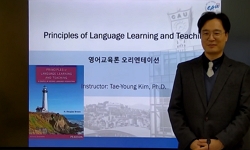The recent increase in migration of ethnic minorities to the countries of East Asia and their subsequent acculturation are topics of growing importance. In South Korea this is so particularly in light of the persistence of Korean attitudes toward eth...
http://chineseinput.net/에서 pinyin(병음)방식으로 중국어를 변환할 수 있습니다.
변환된 중국어를 복사하여 사용하시면 됩니다.
- 中文 을 입력하시려면 zhongwen을 입력하시고 space를누르시면됩니다.
- 北京 을 입력하시려면 beijing을 입력하시고 space를 누르시면 됩니다.
Disinclusion : a qualitative study of the acculturative experience of English instructors in South Korea
한글로보기https://www.riss.kr/link?id=T13735676
- 저자
-
발행사항
Seoul : Graduate School of International Studies, Yonsei University, 2015
-
학위논문사항
학위논문(석사) -- Graduate School of International Studies, Yonsei University , [Major in Korean Studies] , 2015.2
-
발행연도
2015
-
작성언어
영어
- 주제어
-
발행국(도시)
서울
-
형태사항
vi, 65장 : 삽화 ; 26 cm
-
일반주기명
지도교수: Hyuk-rae Kim
- 소장기관
-
0
상세조회 -
0
다운로드
부가정보
다국어 초록 (Multilingual Abstract)
The recent increase in migration of ethnic minorities to the countries of East Asia and their subsequent acculturation are topics of growing importance. In South Korea this is so particularly in light of the persistence of Korean attitudes toward ethnic consanguineous homogeneity and the relationship in Korea of ethnicity and identity. To date, research on labor and marriage migrants from the Global South significantly outweighs that conducted generally more highly educated and better-paid migrant English teachers. Models of acculturation developed for and applied to past examples of immigration tend to have ignored the bi-directionality of such thus focusing solely upon the dominant host or accepting-side, and sought to explain acculturation as generally following one of four strategies: assimilation, separation, integration, or marginalization. It is the argument of this study that such models are inapplicable to the case of migrant English teachers. Via qualitative interviews, this study undertakes a joining-side approach to the investigation of migrant English teacher acculturation in South Korea. Three dimensions are identified as having an effect upon this process: time spent in South Korea, marriage to a Korean, and Korean language acquisition. It is hypothesized that via these dimensions participants pursue an inclusive acculturative strategy. However, it was found that while participants do not characterize their acculturation as actively inclusive, neither do they report being actively excluded. The term disinclusion has been coined to refer to this discrepancy, constitutive of an acculturative condition to which English teachers in South Korea are subject and to which they react with a variable response termed the disinclusion reaction. Participants were found to persevere in spite of disinclusion, to respond variably vis-?-vis the study’s dimensions, ultimately resulting in perpetuation of their being subject to disinclusion.








